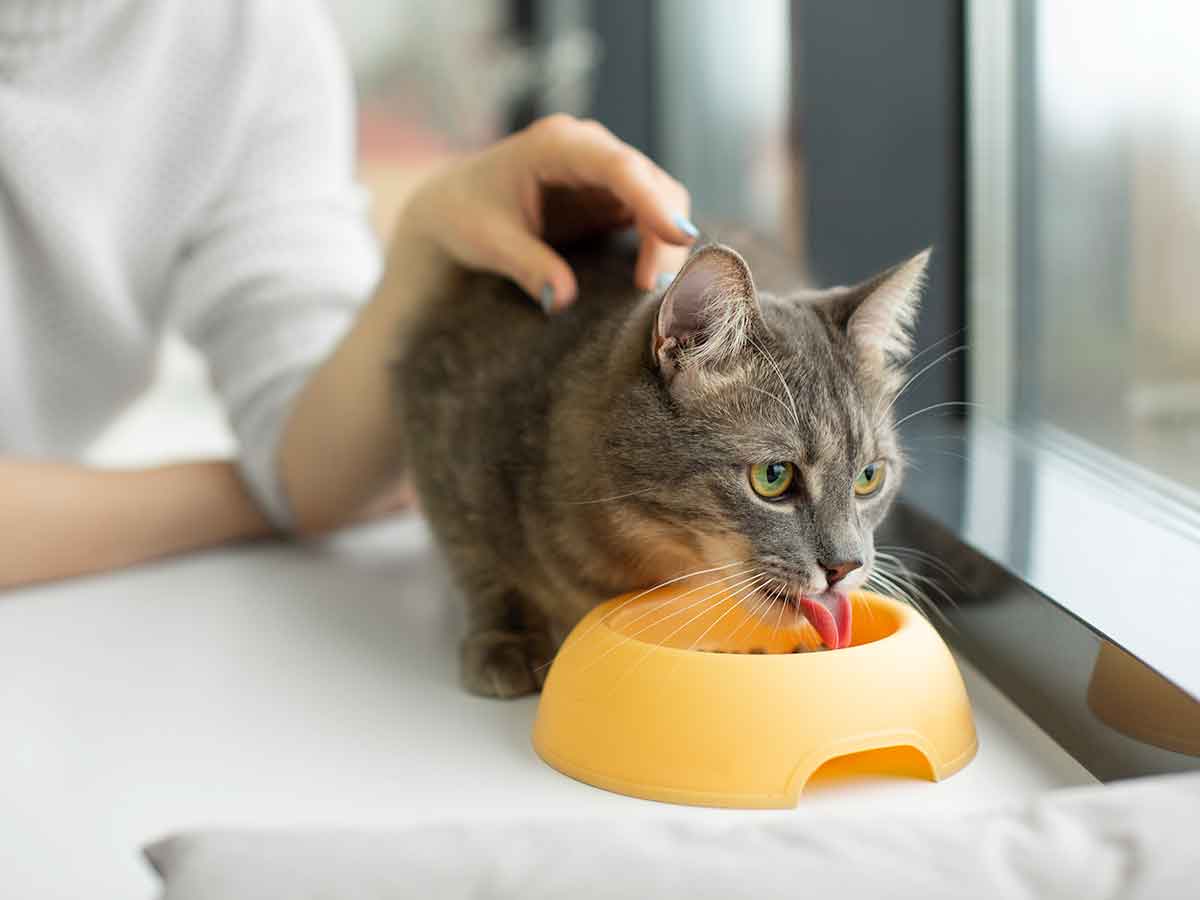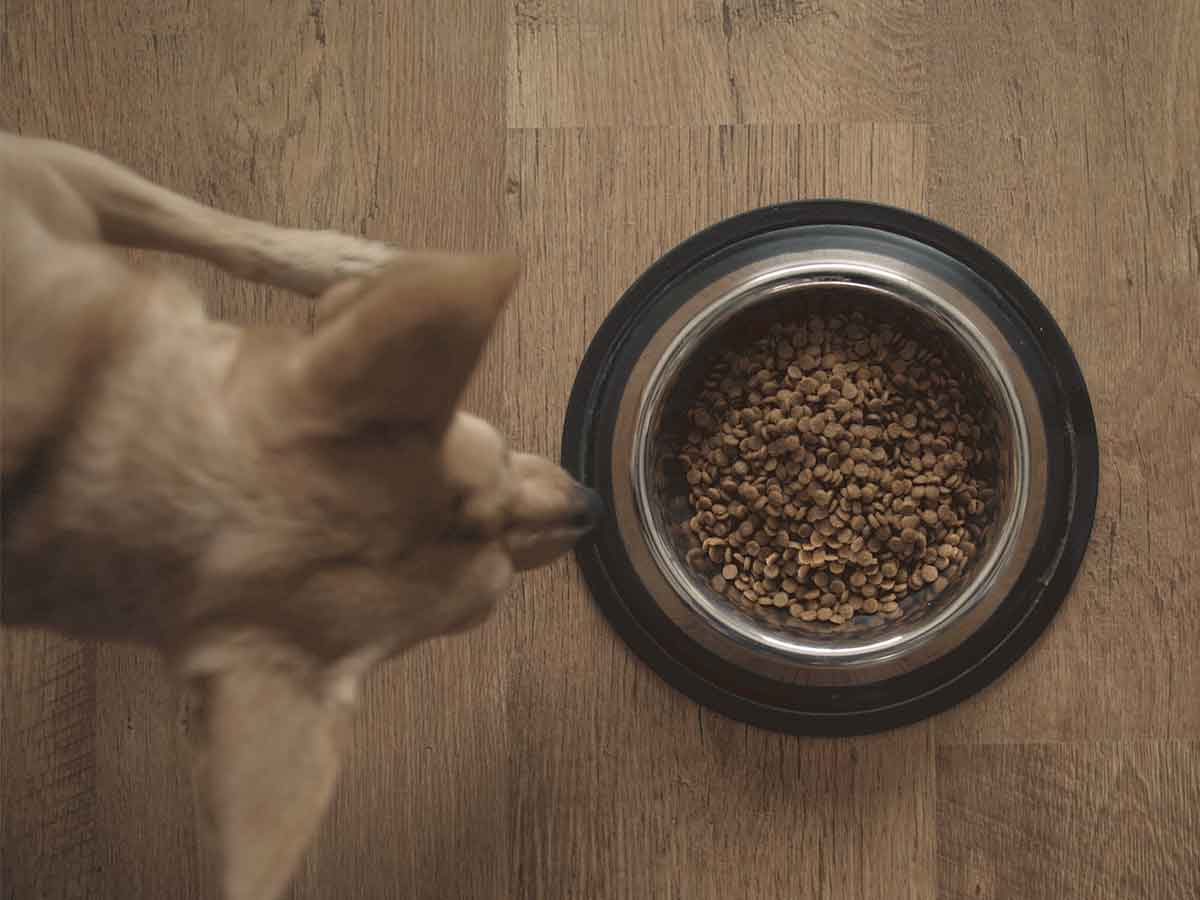If your cat is like most felines, he lets you know loud and clear when he’s hungry. As you wait on your famished feline and prepare his meal, will you be feeding him the healthiest fare available? Pets who receive optimal nutrition have the best chance of living long and healthy lives.
Today more cat food choices than ever are available in the supermarket, at the pet store, and even in your veterinarian’s office. Companies and the nutritionists who work for them also have devised products to meet the specific needs of pets in terms of life stage (kitten, adult, senior), whether they need to lose or gain weight, or if they have particular food sensitivities or health concerns.
It’s always a good idea to discuss nutrition when visiting your veterinarian. In the meantime, the biggest decision to make is whether to feed your cat wet food, dry, or a combination of the two.
Your cat’s diet
Know the differences:
Dry food1
● Is usually cheaper than canned
● Can be left out for a cat to nibble on all day (and even if you have to leave overnight)
● Have more carbohydrates than wet
Canned food1
● Costs more
● Spoils if left out too long
● Needs refrigeration after it is opened
● Provides the moisture cats need, especially those who don’t drink much water
● Has fewer carbohydrates than dry
Based on the qualities of wet and dry food, a meal that consists of a mixture of the two, in the proper amount for your cat’s age and size, may be ideal. Talk to your veterinarian about what they think is right for your cat!
Tips
● Always read the label on the back of canned cat food. Although meat may be named as the first ingredient, it doesn’t mean it’s the main ingredient. Check the can’s label to see how much water and moisture is in the cat food. Fillers such as corn and rice offer negligible benefits. Manufacturers may do this to market to customers that their product is healthy.2
● If you’re considering changing your cat’s food, slowly introduce the new kind. Combine a small amount with what you normally feed. If it agrees with your cat, gradually change over to 100 percent new food.3
● Whether you’re loyal to one brand of cat food or want to try a different one, always check a brand’s website for downloadable coupons to save on the cost.
References:
1. Carb Confusion Part 1: The Role of Carbohydrate in Pet Foods. Tufts University. https://vetnutrition.tufts.edu/2021/07/the-role-of-carbohydrate-in-pet-foods/
2. Why you shouldn’t judge a pet food by its ingredient list. Tufts University. https://vetnutrition.tufts.edu/2016/06/why-you-shouldnt-judge-a-pet-food-by-its-ingredient-list/
3. Changing It Up: Introducing Your Cat To New Food. Perfect Fit. https://www.perfect-fit.co.uk/cat-advice/feed/switching-cat-food
Want to share this article?
More like this
Nutrition in diabetic pets
Is your pet diabetic? Make sure you’re maintaining a nutritious diet to keep him happy and healthy.
What to feed fluffy? Dry or wet? Both?
Every cat is different when it comes to wet or dry food. Find out which one is best for you.
Does your dog need to go on a diet?
A chubby pup might be cute, but it’s best for your dog to maintain a healthy weight. Here’s how to tell if he’s put on a few too many pounds.





 Austria
Austria Belgium
Belgium Czech Republic
Czech Republic Denmark
Denmark Europe
Europe Finland
Finland France
France Germany
Germany Greece
Greece Hungary
Hungary Ireland
Ireland Israel
Israel Italy
Italy Netherlands
Netherlands Norway
Norway Poland
Poland Portugal
Portugal Romania
Romania Spain
Spain Sweden
Sweden Turkey
Turkey United Kingdom
United Kingdom United States
United States